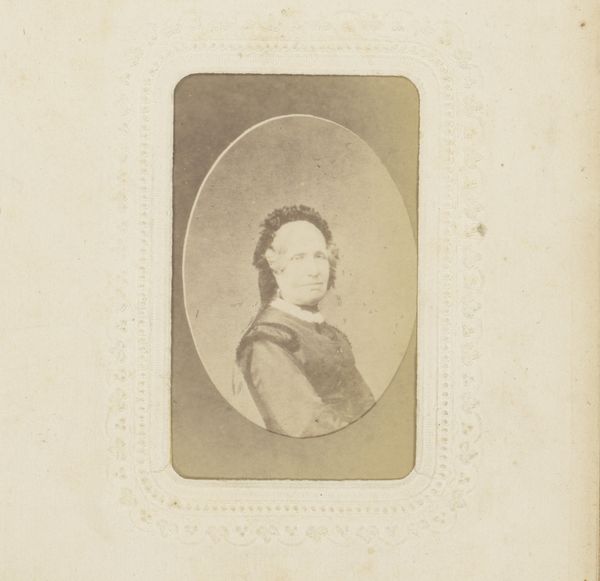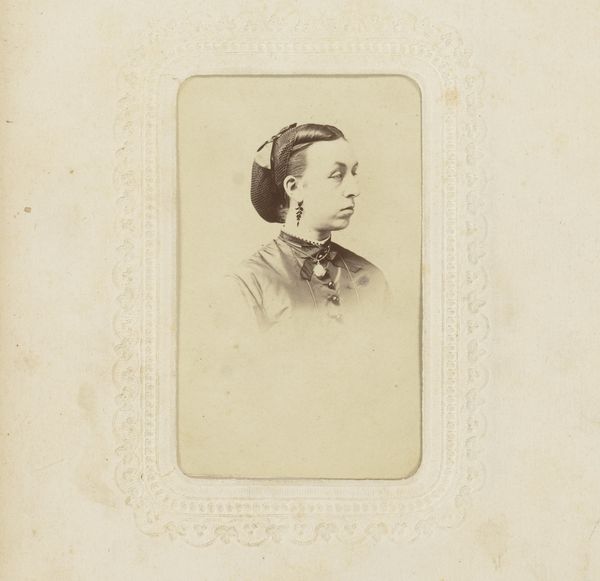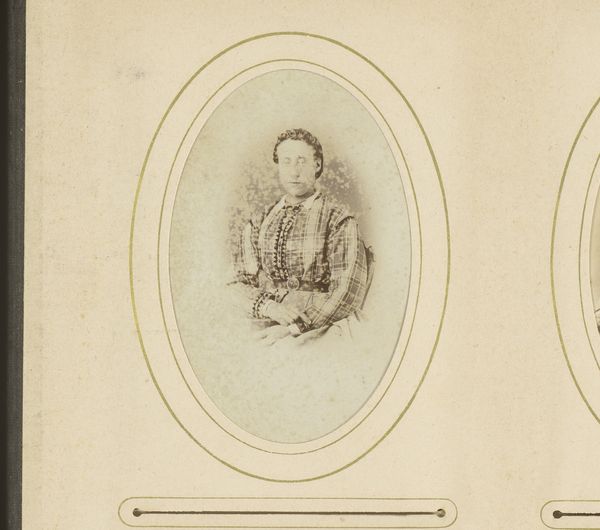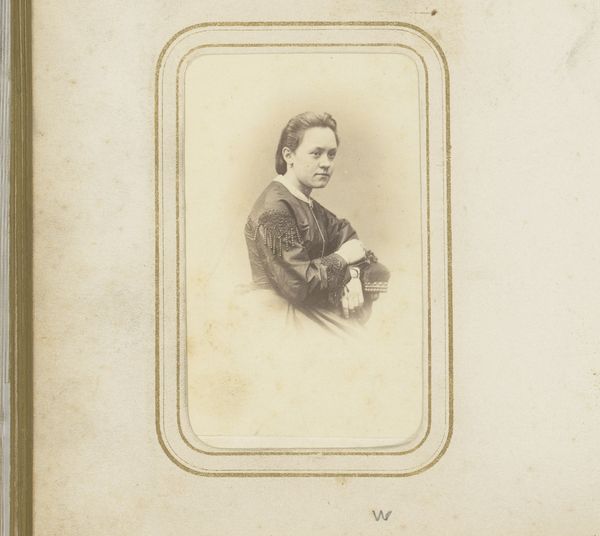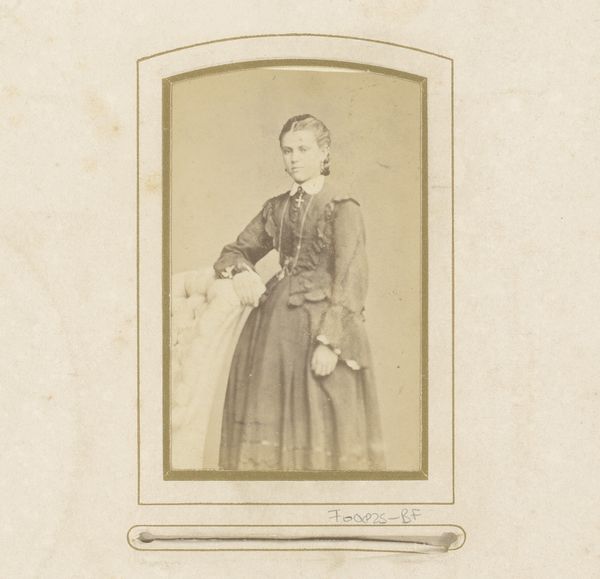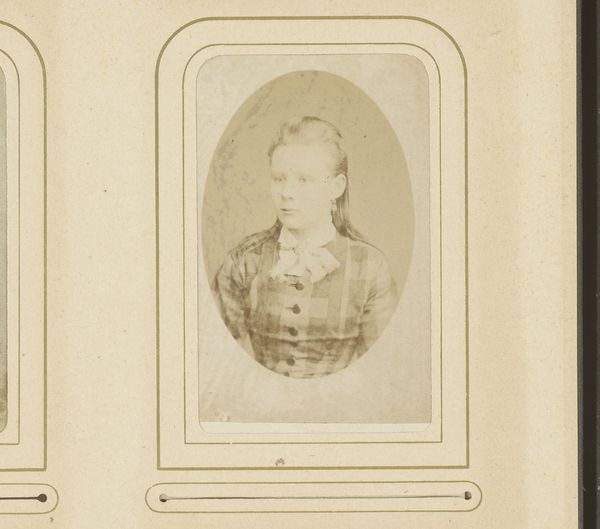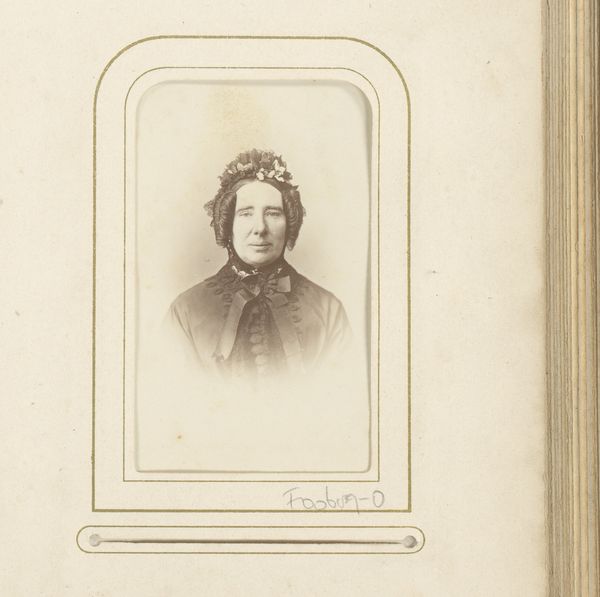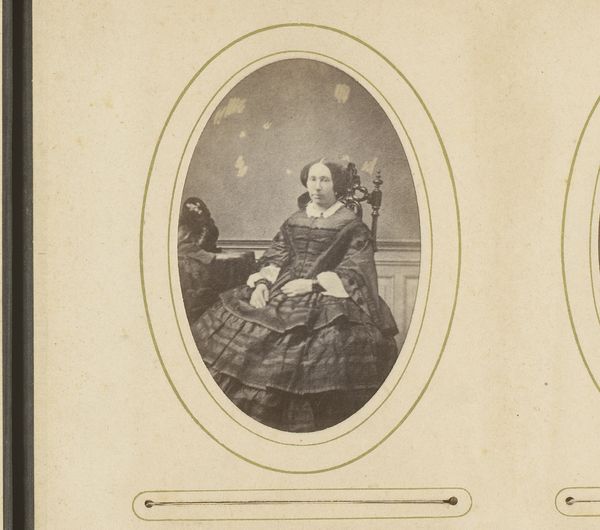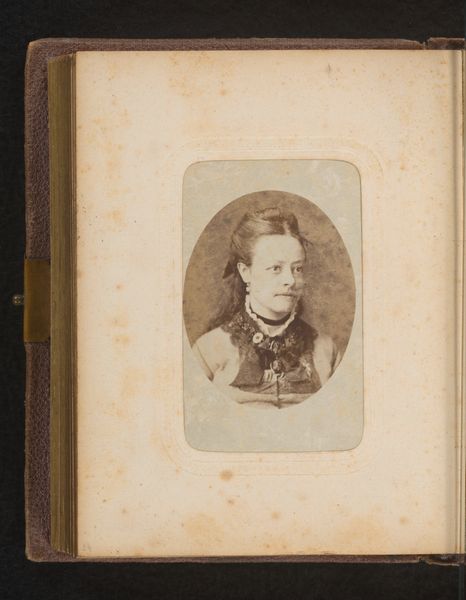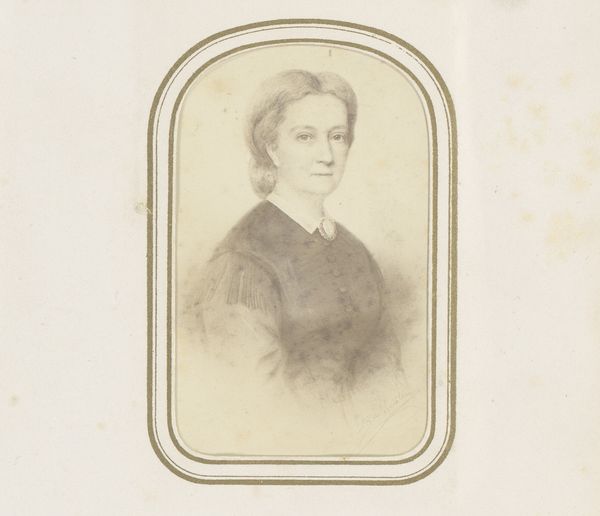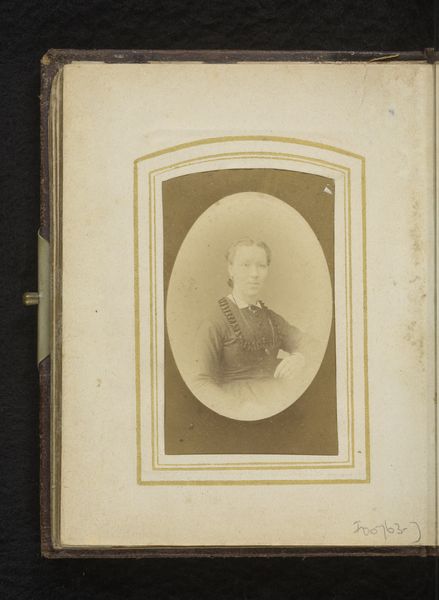
photography
#
portrait
#
photography
Dimensions: height 83 mm, width 51 mm
Copyright: Rijks Museum: Open Domain
Editor: Here we have "Portret van een vrouw," taken sometime between 1867 and 1875, by Ladislas Straszak. It's a photograph, presented in an oval frame within a rectangular decorative mount. I'm immediately drawn to the textures at play—the sheen of her dress fabric against the matte background, the rougher texture of the decorative border. How does the formal composition influence your perception of this portrait? Curator: It’s an interesting contrast of textures, isn’t it? Focusing on the formal elements, the photograph's success resides primarily in its tonal range. Notice how Straszak has expertly used light to model the face and the folds of the sitter's dress. The oval vignette concentrates our gaze, while the framing device – the ornate card – flattens the pictorial space, serving almost as a decorative border rather than enhancing depth. Editor: So, the border's function is more about visual framing than spatial context? Curator: Precisely. The flatness emphasizes the photograph as an object, rather than a window onto another world. Consider the geometric contrast between the oval and the rectangle; the soft curve of the vignette directs our focus inwards, while the sharp angles of the card situate the portrait within a structured, almost architectural setting. Note how the photographer arranged the light that is illuminating from the left of the composition as well as above in order to draw attention. Editor: That's fascinating, I hadn't considered the geometric interplay that deeply. Curator: These choices reflect a conscious manipulation of form, aiming to elicit a particular aesthetic experience. Did this shift in perception add something new to your original sense of the piece? Editor: Absolutely, by focusing on these aspects it feels more considered, deliberate and ultimately, more powerful. Thanks for your insight!
Comments
No comments
Be the first to comment and join the conversation on the ultimate creative platform.
